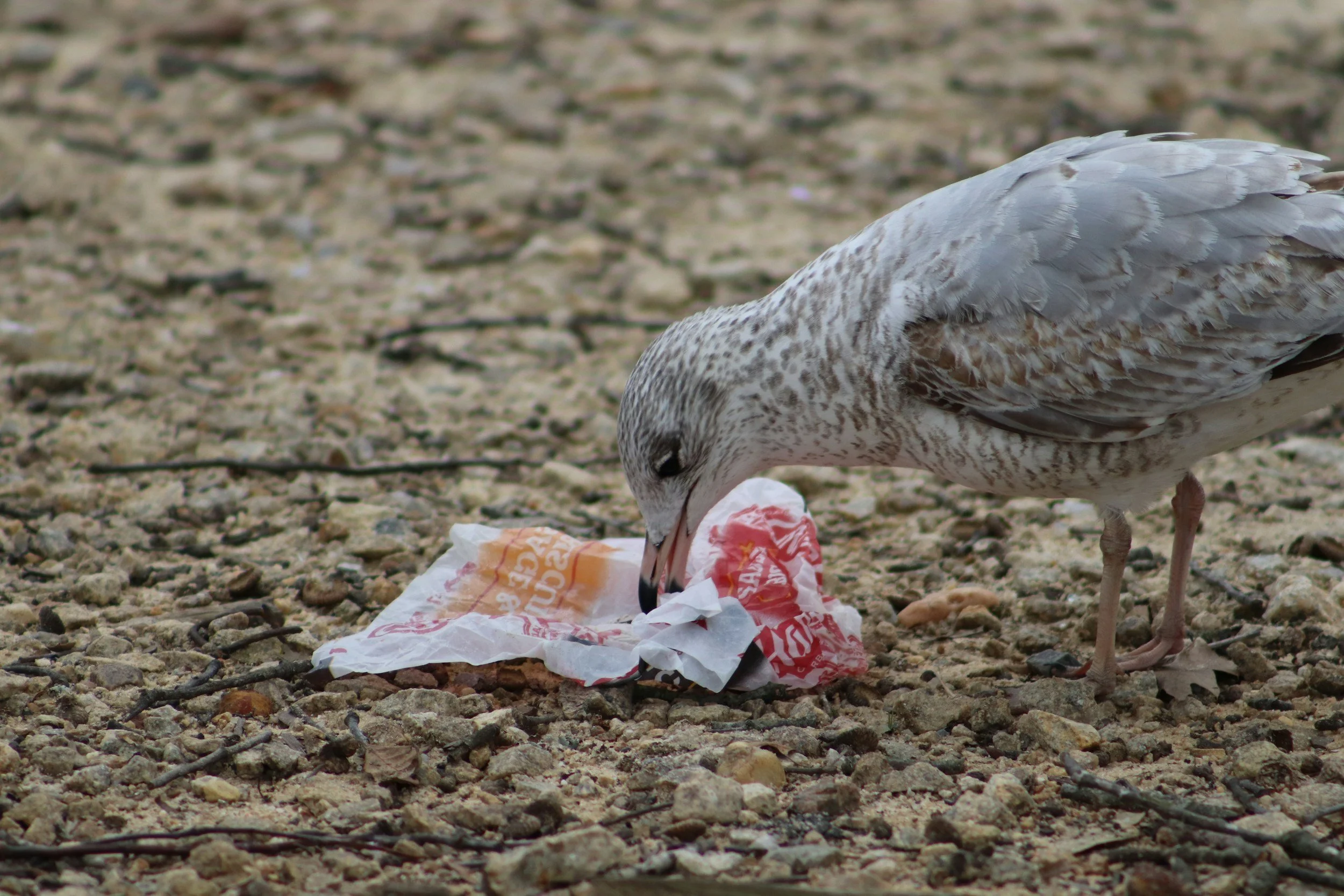Leave No Trace
Litter may seem like a small problem, but for wildlife, it can be deadly. Every day, animals across land, sea, and sky are injured, poisoned, or killed by human trash. From tangled fishing line to discarded food containers, litter creates traps, toxins, and obstacles that wild creatures are unequipped to deal with.
But the good news is: this is a problem we can fix. By changing our habits and helping clean up our communities, we can save lives and protect the wild spaces we all share.
How Litter Hurts Wildlife
Entanglement: Plastic rings, strings, fishing line, and even face masks can easily ensnare birds, mammals, and reptiles.
Birds get tangled in string or balloon ribbons, making it hard to fly, forage, or escape predators.
Marine animals like sea turtles and seals become trapped in fishing gear or six-pack rings, which can cut into their flesh or cause drowning.
Small mammals may get stuck in jars, cans, or drink cups, unable to back out or breathe.
Ingestion and Starvation: Animals often mistake litter for food. Once eaten, it can block digestion, fill their stomachs with indigestible material, or release toxins.
Birds eat plastic pellets, cigarette butts, or bottle caps, especially when coated in food residue.
Sea turtles mistake floating plastic bags for jellyfish, a favorite prey item.
Microplastics are now found in the bodies of fish, whales, birds, and even humans, showing how far-reaching this problem has become.
Toxicity and Poisoning: Litter can leach harmful chemicals into the environment or directly poison animals.
Batteries, cigarette butts, and broken electronics leak heavy metals and toxic substances into soil and water.
Old food containers grow mold or bacteria that make animals sick.
Sharp objects like glass and metal can cut paws, mouths, and digestive systems.
What We Can Do
Solving the litter problem doesn’t require fancy technology. It just takes care, awareness, and collective action.
Dispose of Trash Properly
Always use garbage and recycling bins with secure lids, especially near parks, beaches, or natural areas.
When hiking or picnicking, follow “Leave No Trace” principles: pack out everything you bring in.
Join or Organize Cleanups
Community cleanups at beaches, rivers, parks, or roadside areas are great ways to remove litter and raise awareness.
Even informal efforts, like picking up trash during a walk, make a real impact.
Reduce Single-Use Items
Bring your own reusable bags, bottles, utensils, and containers.
Skip straws, avoid heavily packaged goods, and choose products made from recycled or biodegradable materials.
Avoid Balloon Releases
Balloons, especially foil or latex, are deadly when they land. Birds and sea turtles often mistake them for food or become tangled in the strings.
Choose alternative celebrations like bubbles, paper streamers, or native flower seed tosses.
Secure and Cut Potential Hazards
Cut plastic rings and loops before disposal so they can’t trap animals.
Properly dispose of fishing line and gear using dedicated recycling stations where available.
Educate and Advocate
Talk to family and friends about how their habits affect wildlife.
Support bans on single-use plastics or stricter waste regulations in your community.
Every Action Counts
Litter might feel like someone else’s problem, but every time we leave something behind or walk past a piece of trash without picking it up, we’re contributing to a chain of harm. Conversely, every wrapper you pick up, every reusable item you choose, and every cleanup you join is a step toward a healthier planet.
Wild animals don’t get to choose where they live. They have to make do with the world we create. Let’s make it a cleaner, safer one.


